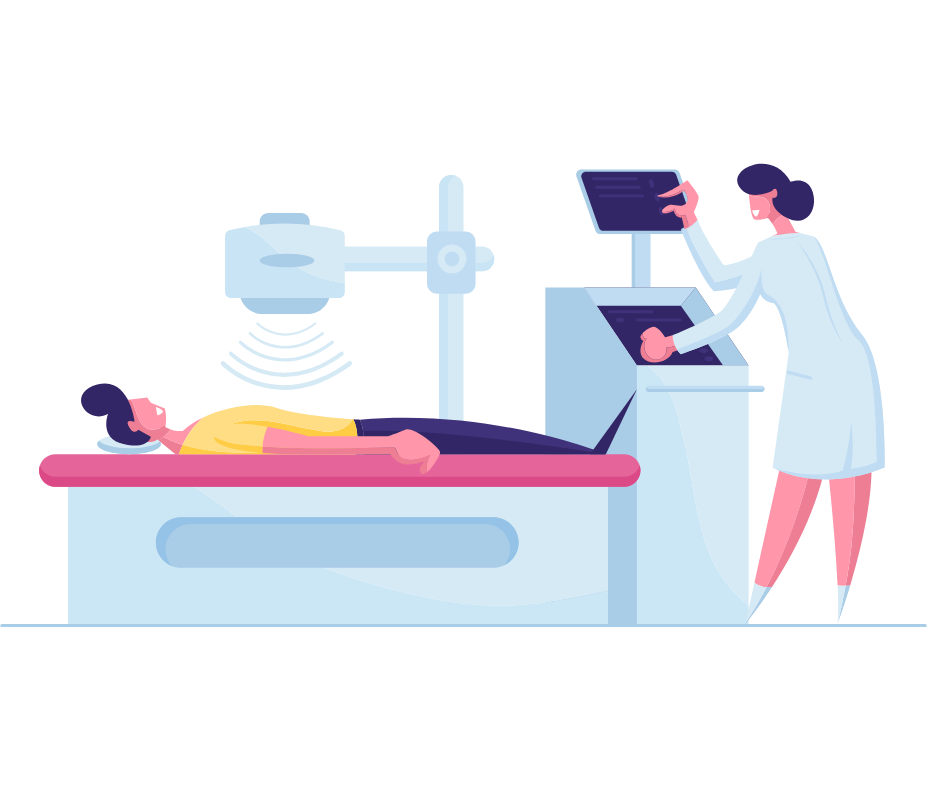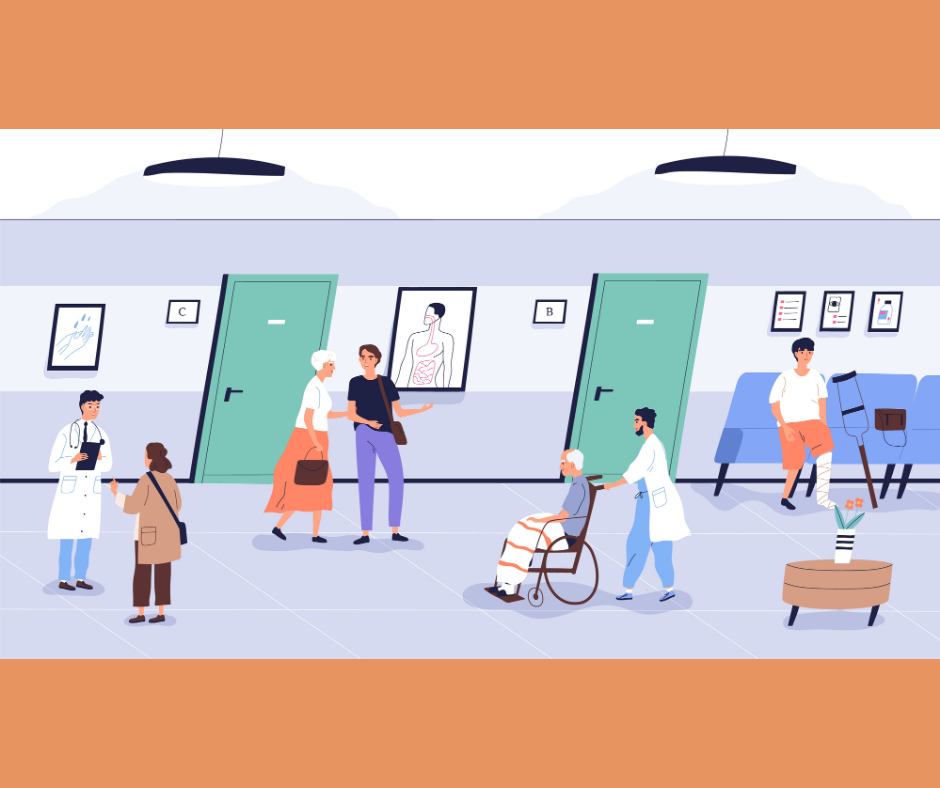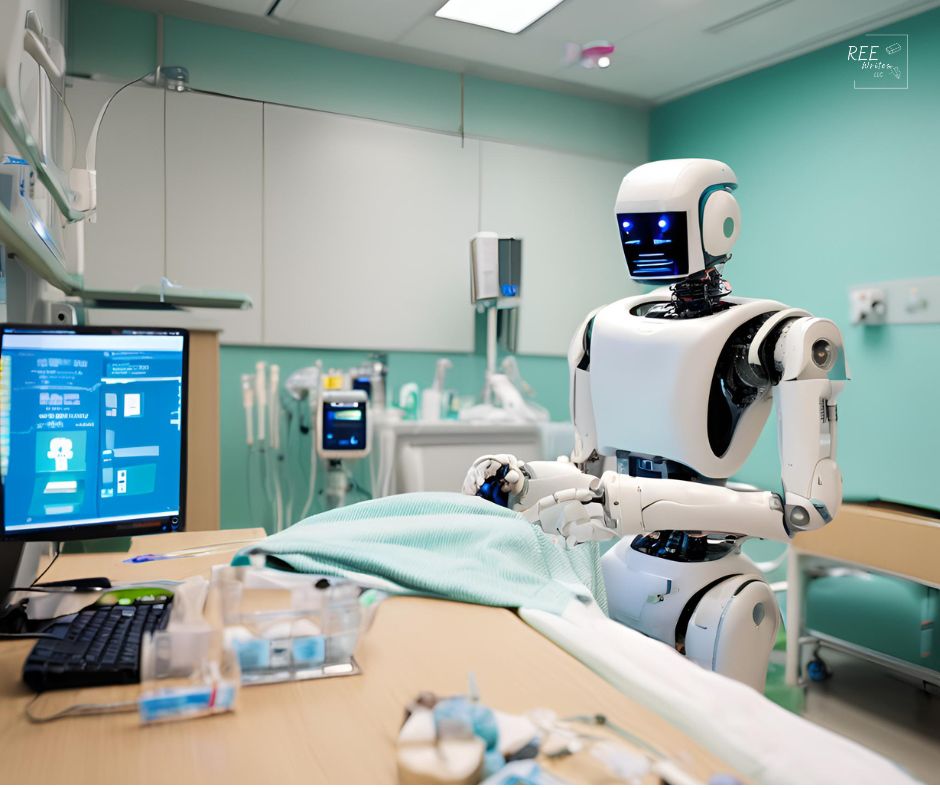Mental health counseling and therapy is not easy to navigate when you need it—I know first-hand. But AI in mental health treatment is a promising solution, providing innovative solutions for diagnosis, treatment, and patient management.
This article delves into the exciting ways AI is enhancing mental health care, from early detection to personalized treatment plans. We’ll explore the benefits, challenges, and ethical considerations surrounding this technological revolution in mental wellness.
Contents
- Background on AI in Mental Health
- AI Applications and Benefits in Mental Health Treatment
- Early Detection and Diagnosis
- Personalized Treatment Plans
- Mental Health Apps, Virtual Therapists, and Chatbots
- Enhancing Traditional Therapy Methods
- Challenges and Ethical Concerns
- The Future of AI in Mental Health Treatment
- Conclusion
Background on AI in Mental Health

The prevalence of mental health issues among adults and teens in the U.S. is staggering.
For adults, from Mental Health America (2023):
- 21.21% of adults in Washington, DC reported experiencing any mental illness (AMI), the highest rate in the nation.
- 15.35% of adults nationwide, or about 38,679,000 people, experienced any mental illness.
- 54.7% of adults with a mental illness, approximately 28,066,000 individuals, did not receive treatment.
For teens:
- The Centers for Disease Control (CDC) reported that anxiety, depression, and suicidal thoughts among teen girls are at the highest rates the country has seen in over a decade (Mally, 2023).
- 21.13% of youth in Oregon reported experiencing at least one major depressive episode in the past year, the highest of all states in the nation (Mental Health America, 2023).
- 10.3% of youth nationwide, or about 1,281,000 teens, experienced a substance use disorder in the past year (Mental Health America, 2023).
These statistics emphasize the need for increased awareness, access to treatment, and support for mental health services across all age groups. Thankfully, AI tools are already helping with this in various applications, as we’ll discuss next.
AI Applications and Benefits in Mental Health Treatment
Artificial Intelligence (AI) is transforming the mental health sector by AI applications in mental health can also help with:
- mental health awareness
- how to support people with mental health issues
- how to treat them

Mental health awareness
People often don’t seek mental health help because they don’t realize they’re struggling. Common symptoms like fatigue or pain might be mistaken for other issues, leading to self-medication that doesn’t address the root cause.
By helping people recognize signs of mental health problems, AI tools can lower the barrier for professional help, and encourage more individuals to seek it when needed. This could bridge the gap between those suffering silently and the healthcare they require (Minerva & Giubilini, 2023).
AI helps spread knowledge about mental health using advanced tech like natural language processing (NLP) and data mining. It analyzes social media to understand public opinions, uses chatbots to share info, and creates personalized educational content. This helps fight societal stigmas, encourage discussions, and make mental health information more accessible to everyone (Thakkar et al., 2024).
Emotional support
AI offers new ways to help people with mental health issues. It can remind people to take medicine, track moods, and spot behavior changes that might mean someone’s struggling. AI also connects people in online support groups and motivates them during recovery. It works alongside traditional mental health care to provide extra support (Thakkar et al., 2024).
Intervention

AI is changing how we predict, spot, and treat mental health problems. It can find early signs of issues, personalize treatments, and even redefine how we classify mental illnesses. AI health chatbots can identify problems through conversations and suggest help. It also enhances therapy with digital exercises and helps therapists make better treatment choices (Thakkar et al., 2024).
AI-powered tools can analyze vast amounts of data to identify patterns and predict mental health issues before they become severe (a process called predictive analysis). This proactive approach is vital in a field where early intervention can significantly improve outcomes.
Adoption rates and effectiveness
AI in mental health has become popular among the general public. More people are using AI mental health apps, with a surge during the COVID-19 pandemic when regular therapy was harder to get.
One of the most promising areas where AI is making a difference is in the early detection and diagnosis of mental health disorders.
Early Detection and Diagnosis
AI-powered screening tools for mental health disorders
AI-powered screening tools facilitate the early detection of mental health disorders. These tools use machine learning (ML) algorithms to analyze data from various sources, such as social media posts, speech patterns, and facial expressions (Binariks, 2023).
For example, natural language processing (NLP) can detect linguistic cues that indicate depression or anxiety. And a deep network model called RobIn can diagnose schizophrenia with 98% accuracy. It outperforms other methods in clinical settings and helps identify key behavioral features for clinicians. (Organisciak et al., 2021)
Machine learning algorithms that analyze speech and facial expressions

ML algorithms can analyze subtle changes in speech and facial expressions to identify early signs of mental health issues. They can detect stress, anxiety, and depression by analyzing voice tone, pitch, and facial muscle movements. This technology is particularly useful in settings where traditional diagnostic methods are not feasible (Jin et al., 2023).
Predictive models to identify at-risk individuals
AI is improving mental health care through early detection and prevention. It can spot subtle signs of mental illness, like changes in speech or sleep patterns. This allows for timely interventions, potentially reducing the need for more intensive treatments (Alhuwaydi, 2024).
AI diagnostic tools can increase the accuracy of mental health disorder diagnoses by 20%. Predictive models can identify individuals at risk of developing mental health disorders by analyzing large datasets. These models consider various factors, including genetic predisposition, lifestyle, and historical medical data, to predict the likelihood of mental health issues.
For instance, AI decision trees help identify suicide risk factors, guiding interventions to boost well-being and self-worth. A study at Vanderbilt University Medical Center showed that ML could predict suicidal tendencies with 80% accuracy by analyzing hospital admission records and clinical data. This enables quick, simple therapy for emotional support and suicide prevention (Morales et al., 2017).
A great way clinicians can apply the information they glean from predictive analysis is to make personalized treatment plans.
Personalized Treatment Plans
AI-driven analysis of patient data for tailored therapies

AI-driven analysis of patient data enables the creation of personalized treatment plans. By analyzing a patient’s medical history, genetic information, and lifestyle factors, AI can suggest tailored interventions that are more likely to be effective. This personalized approach ensures that treatments are specifically designed for each patient’s unique needs.
Adaptive learning systems that customize cognitive behavioral therapy
Cognitive behavioral therapy (CBT) is a form of psychological treatment that focuses on changing unhelpful thought patterns and behaviors. Adaptive learning systems use AI to customize CBT based on a patient’s progress and response to treatment. These systems can adjust the therapy’s content and delivery method in real-time, ensuring that the patient receives the most effective treatment. This dynamic approach enhances the efficacy of CBT and improves patient outcomes (MayoClinic, 2019).
Wearable technology integration and real-time AI mood monitoring

Wearable technology integrated with AI can provide real-time mood monitoring, allowing for immediate intervention when necessary. Devices like smartwatches and fitness trackers can monitor physiological signals such as heart rate, sleep patterns, and physical activity. AI algorithms analyze this data to assess the person’s mood and cognitive status, providing timely alerts and recommendations (Olawade et al., 2024).
Personalized treatment plans may include mobile apps for mental health support.
Mental Health Apps, Virtual Therapists, and Chatbots
AI mental health chatbot effectiveness
40% of mental health apps have some form of AI incorporated into their system. AI-powered mental health apps and platforms are becoming increasingly popular, with over 2 million users worldwide. These apps use chatbots and virtual therapists to provide counseling and emotional support.
- Woebot: An AI-driven chatbot that offers cognitive behavioral therapy (CBT) through conversations.
- Tess: A chatbot providing 24/7 emotional support and crisis intervention.
- Biobeat: A wearable device that monitors physiological signals to assess mood and cognitive status.
AI chatbots like Woebot, Wysa, and Tess effectively reduce symptoms of depression and anxiety by 25%, and offer 24/7 emotional support. They use CBT through user-friendly mobile interfaces to provide coping strategies and self-help resources (Fulmer et al. 2018; Fitzpatrick et al. 2017; Inkster et al. 2018).
Meru, Quartet, Aiberry, and Kintsugi are just a few health tech startups with successful AI mental health apps and programs. Text-based AI therapy can also lead to a statistically significant reduction in symptoms of mental health disorders.
Sentiment analysis

A big part of how mental apps and chatbots work is through AI-powered sentiment analysis. ML and DL techniques can detect emotional nuances in language, tone, and feelings in real-time, allowing for more personalized treatment.
It helps mental health professionals understand patients’ emotions better, and complements psychiatrists’ knowledge, improving the depth and scope of care (Alhuwaydi, 2024). It’s no wonder that 80% of mental health app users find AI-generated mental health tips and advice helpful, and 60% report feeling more engaged in their treatment.
Benefits and limitations of virtual therapy assistants
Virtual therapy assistants offer several benefits, including:
- Accessibility: Available 24/7, making mental health support accessible at any time.
- Affordability: Lower cost compared to traditional therapy sessions.
- Anonymity: People can seek help without the stigma associated with mental health issues, and with limited human interaction if desired.
However, there are limitations to consider:
- Lack of Human Touch: Virtual assistants cannot replace the empathy and understanding of a human therapist. (This may not be as important with some conditions, such as autism; Minerva & Giubilini, 2023).
- Data Privacy: Concerns about the security and privacy of sensitive user data.
My in-depth discussion about AI-powered health chatbots.
In addition to mobile apps, AI is improving traditional therapy methods in other ways, which we’ll cover next.
Enhancing Traditional Therapy Methods
AI as a tool for therapists to improve decision-making

AI can help reduce the administrative burden of mental health professionals by 50%. It can assist therapists in making more informed decisions by providing data-driven insights.
For example, AI algorithms can analyze patient data to identify patterns and suggest potential treatment options. 65% of mental health professionals reported using some form of digital mental health treatment.
This support can help therapists develop more effective treatment plans and improve patient outcomes. 90% of therapists believe that AI can improve patient outcomes if used correctly. It helps patients, too–AI in mental health treatment can reduce therapy costs by up to 30%.
Augmented and virtual reality applications in exposure therapy

Augmented reality (AR) and virtual reality (VR) applications are being used in exposure therapy to treat conditions like anxiety, post-traumatic stress disorder (PTSD), and phobias.
Although exposure therapy is a proven treatment for anxiety disorders, it’s not used as often as it could be, because (Boeldt et al., 2019):
- Patients may be scared of facing their fears directly.
- It’s hard to set up real-life exposure situations, or control what patients imagine.
- Some therapists worry about upsetting patients or making their anxiety worse.
- Not many therapists are trained in exposure therapy.
- In-person exposure can be time-consuming and risky.
To get more therapists using exposure therapy, training is key. Workshops can help change negative beliefs about the treatment.
VR technology might be a solution to make this treatment more available and acceptable to both patients and therapists. However, virtual reality (VR) could help solve some of these issues. VR allows therapists to control the exposure situation, making it safer and more gradual. It’s also easier to set up than real-life scenarios. These technologies create controlled environments where patients can confront their fears in a safe and controlled manner. AI algorithms adjust the exposure based on the patient’s response, making the therapy more effective.
AI-assisted progress tracking and treatment adjustment
AI can assist in tracking a patient’s progress and adjusting treatment plans accordingly. CBT chatbots can improve patient adherence to treatment plans by 60%.
By continuously monitoring a patient’s symptoms and responses to treatment, AI can provide real-time feedback to therapists. This allows for timely adjustments to the treatment plan, ensuring that the patient receives the most effective care.
Challenges and Ethical Concerns
We’ve discussed several benefits and examples where AI enhances mental healthcare. But we must address the flip side of challenges and ethics of AI in mental health.
Lack of diverse data for AI training

Current AI research needs more high-quality data and less reliance on symptom-based diagnoses. The field is shifting towards using objective indicators like biomarkers and brain imaging to improve accuracy.
Researchers are also exploring ways to address the complexity of mental illnesses by identifying subtypes and integrating multiple data sources. For example, some studies have used brain scans to identify different depression subtypes, while others have combined brain imaging and genetic data to better understand schizophrenia (Jin et al., 2023).
To make AI models more reliable and applicable to diverse populations, experts emphasize the need for large, varied datasets from multiple sources. This approach could lead to more effective, personalized treatment selection in mental health care.
Data privacy and security concerns in AI-driven mental health care
Data privacy and security are significant concerns in AI-driven mental health care. The sensitive nature of mental health data requires robust security measures to protect patient information. Ensuring data privacy is crucial to maintaining patient trust and complying with regulations like GDPR and HIPAA.
Bias and equitable mental healthcare access

Bias in AI algorithms can lead to inaccurate predictions and perpetuate existing inequalities. It is essential to address these biases by using diverse and representative datasets.
Healthcare practitioners can also be influenced by biases, which affects the quality of patient care. For example, autism in women is often underdiagnosed due to assumptions about its prevalence. Factors like age, ethnicity, and medical history can mislead diagnoses as well. But AI can perform unbiased symptom-based diagnoses and compare them with human assessments. This approach could lead to more accurate diagnoses and faster recovery, while also addressing potential biases in healthcare (Minerva & Giubilini, 2023).
Ensuring equitable access to AI-driven mental health care is also crucial, particularly for underserved populations.
Maintaining the human touch in AI-augmented therapy
While AI offers many benefits, it is essential to maintain the human touch in therapy. Human therapists provide empathy, understanding, and emotional support that AI cannot replicate. Combining AI with human therapists can enhance the effectiveness of mental health care while preserving the essential human element.
The Future of AI in Mental Health Treatment
Investment in AI for mental health is projected to reach $1.2 billion by 2025.

Emerging trends and breakthroughs
The future of AI in mental health treatment is promising, with several emerging trends and potential breakthroughs on the horizon:
- Brain-Computer Interfaces (BCIs): BCIs are systems that enable direct communication between the brain and an external device. They can allow direct communication between the brain and AI systems, offering new ways to diagnose and treat mental health conditions.
- eXplainable AI: Ensuring that AI algorithms are transparent and understandable to clinicians, enhancing trust and adoption.
- Personalized Medicine (precision medicine): AI-driven personalized medicine could revolutionize mental health treatment by providing highly tailored interventions based on individual genetic and biological factors.
Integration of AI with other technologies
Integrating AI with other technologies, such as BCIs and wearable devices, could further enhance mental health care. For example, combining AI with neuroimaging data could provide deeper insights into brain function and mental health conditions, leading to more effective treatments.
Preparing mental health professionals

Mental health professionals need comprehensive AI education to use AI tools in practice effectively (Zhang et al., 2023). This education involves:
- Engagement: Involving professionals, AI developers, clients, and families in designing human-centered AI tools.
- Knowledge expansion: Providing an overview of AI, including its development process, data used, and applications in mental health care. This helps address concerns about validity and accuracy.
- Skill development: Teaching professionals how to use AI tools through hands-on training and mentorship.
- Skill application: Incorporating real-life case scenarios to demonstrate AI’s practical benefits in improving care quality, to ensure that professionals can effectively integrate AI into their practice.
- Assessment and reflection: Evaluating professionals’ understanding and comfort with AI, gathering feedback to refine educational activities.
- Collaboration: Encouraging collaboration between AI experts and mental health professionals to develop and refine AI-driven solutions.
- Continuous learning: Encouraging ongoing education to keep up with rapid AI advancements.
- Ethical Guidelines: Establishing ethical guidelines for the use of AI in mental health care to ensure that it is used responsibly and ethically.
This approach can help increase health professionals’ willingness to adopt AI tools by addressing concerns about equity, diversity, and inclusion. Education can come from undergraduate curricula, workshops, and continuing education courses. The goal is to create a workforce comfortable with using AI to enhance mental health care while maintaining a focus on human-centered treatment.
Conclusion
From early detection to personalized care plans, AI is opening new doors in our understanding and approach to mental wellness. Striking a balance between technological innovation and human empathy will be key. The future of mental health care looks bright, with AI serving not as a replacement for human therapists, but as a powerful tool to enhance and extend their capabilities.
References
Adult Data 2023. (2023). Mental Health America. Retrieved from https://mhanational.org/issues/2023/mental-health-america-adult-data
Cognitive behavioral therapy. (2019). MayoClinic. Retrieved from https://www.mayoclinic.org/tests-procedures/cognitive-behavioral-therapy/about/pac-20384610
Alhuwaydi, A. M. (2024). Exploring the Role of Artificial Intelligence in Mental Healthcare: Current Trends and Future Directions – A Narrative Review for a Comprehensive Insight. Risk Management and Healthcare Policy, 17, 1339-1348. doi.org/10.2147/RMHP.S461562
Boeldt, D., McMahon, E., McFaul, M., & Greenleaf, W. (2019). Using Virtual Reality Exposure Therapy to Enhance Treatment of Anxiety Disorders: Identifying Areas of Clinical Adoption and Potential Obstacles. Frontiers in Psychiatry, 10. doi.org/10.3389/fpsyt.2019.00773
Fitzpatrick, K.K., Darcy, A., & Vierhile, M., (2017): Delivering cognitive behavior therapy to young adults with symptoms of depression and anxiety using a fully automated conversational agent (Woebot): A randomized controlled trial, JMIR Mental Health, 4(2), e19. doi.org/10.2196/mental.7785
Fulmer, R., Joerin, A., Gentile, B., Lakerink, L., & Rauws, M. (2018). Using psychological artificial intelligence (Tess) to relieve symptoms of depression and anxiety: Randomized controlled trial. JMIR Mental Health, 5(4), e64. doi.org/10.2196/mental.978
Inkster, B., Sarda, S., & Subramanian, V., (2018). An empathy-driven, conversational artificial intelligence agent (Wysa) for digital mental well-being: Real-world data evaluation mixed-methods study. JMIR Mhealth Uhealth, 6(11), e12106. doi.org/10.2196/12106
Jin, K. W., Li, Q., Xie, Y., & Xiao, G. (2023). Artificial intelligence in mental healthcare: An overview and future perspectives. British Journal of Radiology, 96(1150). doi.org/10.1259/bjr.20230213
Lindner, J. (2024) AI in the Mental Health Industry Statistics. WorldMetrics. Retrieved from https://worldmetrics.org/ai-in-the-mental-health-industry-statistics/
Mally, C. (2023). Mental Health in Teens Statistics 2023. Sandstone Care. Retrieved from https://www.sandstonecare.com/news/mental-health-in-teens-statistics-2023/
Mathews, A. (2024). Top AI Startups Solving Mental Health in US. AIM Research. Retrieved from https://aimresearch.co/market-industry/top-ai-startups-solving-mental-health-in-us
Minerva, F., & Giubilini, A. (2023). Is AI the Future of Mental Healthcare? Topoi, 42(3), 809-817. doi.org/10.1007/s11245-023-09932-3
Morales, S., Barros, J., Echávarri, O., García, F., Osses, A., Moya, C., Maino, M. P., Fischman, R., Núñez, C., Szmulewicz, T., & Tomicic, A. (2017). Acute mental discomfort associated with suicide behavior in a clinical sample of patients with affective disorders: Ascertaining critical variables using artificial intelligence tools. Frontiers in Psychiatry, 8(7). doi.org/10.3389/fpsyt.2017.00007
Olawade, D. B., Wada, O. Z., Odetayo, A., David-Olawade, A. C., Asaolu, F., & Eberhardt, J. (2024). Enhancing mental health with Artificial Intelligence: Current trends and future prospects. Journal of Medicine, Surgery, and Public Health, 3, 100099. doi.org/10.1016/j.glmedi.2024.100099
Organisciak, D., Shum, H.P.H., Nwoye, E., & Woo, W.L., (2022). RobIn: A robust interpretable deep network for schizophrenia diagnosis. Expert Systems with Applications, Volume 201. doi.org/10.1016/j.eswa.2022.117158
Revolutionizing Mental Health Care: The Role of Artificial Intelligence. (2023). Binariks. Retrieved from https://binariks.com/blog/ai-mental-health-examples-benefits/
Thakkar, A., Gupta, A., & Sousa, A. D. (2024). Artificial intelligence in positive mental health: A narrative review. Frontiers in Digital Health, 6. https://doi.org/10.3389/fdgth.2024.1280235
Youth data 2023. (2023). Mental Health America. Retrieved from https://mhanational.org/issues/2023/mental-health-america-youth-data
Zhang, M., Scandiffio, J., Younus, S., Jeyakumar, T., Karsan, I., Charow, R., Salhia, M., & Wiljer, D. (2023). The Adoption of AI in Mental Health Care–Perspectives From Mental Health Professionals: Qualitative Descriptive Study. JMIR Formative Research, 7. doi.org/10.2196/47847













































































